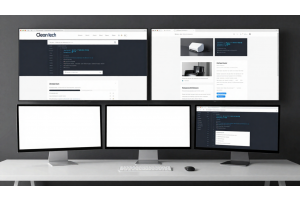The Pre-Holiday Trust Formula: Content That Converts When It Matters Most

The Pre-Holiday Trust Formula: Content That Converts When It Matters Most
The pre-holiday shopping season isn't just another sales period—it's a psychological battleground where consumer behavior undergoes a fundamental transformation. During these critical weeks, shoppers simultaneously become more generous with their spending and more ruthless with their scrutiny. They're willing to pay premium prices but demand premium assurance. Understanding this paradox is the key to creating content that doesn't just inform, but builds the unshakeable trust foundation that converts hesitant browsers into confident buyers.
Table Of Content
The Neuroscience of Pre-Holiday Shopping
Recent consumer psychology research reveals that holiday shoppers operate under unique cognitive pressures that fundamentally alter their decision-making processes. The combination of time pressure, social expectations, and financial considerations creates what behavioral economists call "cognitive load amplification"—where every piece of uncertainty becomes magnified.
During the pre-holiday period, consumers exhibit heightened loss aversion, meaning the fear of making a wrong choice becomes more powerful than the desire to find a great deal. This shift makes trust-building content not just helpful, but neurologically necessary for conversion optimization. When cognitive load is high, shoppers rely more heavily on external validation signals to reduce mental effort in decision-making.
The most successful brands recognize that pre-holiday shoppers are essentially operating in a different psychological state. They're not just buying products; they're buying peace of mind, social approval, and the promise of creating positive experiences for others. Content that acknowledges and addresses these deeper motivations consistently outperforms purely product-focused messaging.
The Trust-Conversion Ecosystem
Trust and conversions during the holiday season don't exist in isolation—they form a complex ecosystem where each element reinforces the others. This ecosystem operates on three interconnected levels: rational trust (facts, features, guarantees), emotional trust (brand connection, values alignment, social proof), and systemic trust (website security, shipping reliability, customer service responsiveness).
The most effective pre-holiday content addresses all three trust dimensions simultaneously. For example, a gift guide doesn't just list products (rational) but tells stories about how gifts create moments of joy (emotional) while prominently displaying security badges and delivery guarantees (systemic). This multi-layered approach creates what psychologists call "trust redundancy"—multiple pathways to the same confident purchase decision.
Understanding the trust-conversion ecosystem also reveals why traditional sales tactics often backfire during the holiday season. Aggressive discounting without trust signals can actually decrease conversions by triggering quality concerns. Urgent messaging without transparent policies breeds skepticism rather than action. The brands that win during the holidays are those that build trust first and layer in conversion tactics second.
Advanced Content Strategies for Pre-Holiday Dominance
Hyper-Personalized Gift Intelligence
The future of gift guides lies not in broad categorization but in sophisticated personalization that makes shoppers feel understood at an individual level. Advanced gift guides use behavioral data, purchase history, and stated preferences to create genuinely helpful recommendations that feel almost telepathic in their accuracy.
These evolved gift guides go beyond simple demographic targeting to incorporate psychographic insights, seasonal behavior patterns, and even cultural nuances. They address specific gifting scenarios with precision: "For your sister who just started her fitness journey," "For your colleague who mentioned loving artisanal coffee," or "For your partner who's been working from home and needs comfort upgrades."
The most sophisticated versions include interactive elements like gift personality quizzes, budget optimizers, and even AI-powered chat interfaces that help refine recommendations through conversation. These tools don't just suggest products—they guide users through the entire gifting thought process, reducing decision fatigue while building brand authority.
The most effective social proof strategies use what psychologists call "similarity bias"—showing potential customers people who are like them making successful purchases. This might include filtered reviews by demographic, location-based testimonials, or use-case-specific endorsements that help shoppers visualize themselves as satisfied customers.
Advanced social proof also leverages temporal psychology, showing recent activity to create momentum and FOMO without resorting to manipulative tactics. Real-time elements like "127 people viewed this item in the last hour" or "Sarah from Portland just purchased this for her daughter" provide authentic social validation while maintaining trust.
Educational Content That Converts
The most powerful pre-holiday educational content doesn't just inform—it transforms uncertainty into confidence and confusion into clarity. This content type requires deep understanding of customer pain points, industry expertise, and the ability to translate complex information into actionable insights.
Effective educational content during the holiday season addresses both explicit needs (product comparisons, sizing guides, compatibility information) and implicit concerns (gift appropriateness, value perception, recipient satisfaction). It anticipates questions customers don't even know they should ask and provides answers that position your brand as the obvious solution.
The highest-converting educational content includes decision frameworks that help customers navigate choices confidently. Instead of overwhelming shoppers with options, these frameworks provide clear criteria for evaluation, step-by-step decision processes, and confidence-building validation at each stage.
Authentic Urgency Engineering
Creating genuine urgency without damaging trust requires sophisticated understanding of consumer psychology and operational reality. Authentic urgency content leverages real constraints—inventory levels, shipping deadlines, production schedules—while providing value that justifies the time-sensitive nature of the offer.
Creating genuine urgency without damaging trust requires sophisticated understanding of consumer psychology and operational reality. Authentic urgency content leverages real constraints—inventory levels, shipping deadlines, production schedules—while providing value that justifies the time-sensitive nature of the offer.
Advanced urgency engineering also includes contingency planning, showing customers alternative options when primary choices aren't available. This demonstrates genuine concern for customer success rather than just immediate conversion, building long-term trust while maintaining short-term momentum.
Omnichannel Trust Orchestration
Modern pre-holiday success requires seamless trust-building across every customer touchpoint. This means ensuring consistent messaging, aligned timing, and reinforcing trust signals whether customers encounter your brand through social media, email, search results, or direct visits to your website.
The most sophisticated brands create what could be called "trust momentum"—where each interaction builds on previous trust-building efforts rather than starting from zero. This requires careful tracking of customer journey stages and tailored content that acknowledges and builds upon previous interactions.
Omnichannel orchestration also means preparing for customer research behaviors that span multiple sessions and devices. Pre-holiday shoppers rarely make immediate purchase decisions; they research on mobile, compare on desktop, and often make final purchases on different devices entirely. Trust-building content must be accessible and consistent across all these touchpoints.
Advanced Metrics and Attribution
Measuring pre-holiday content success requires sophisticated understanding of attribution models that account for the extended, multi-touchpoint nature of holiday shopping journeys. Traditional last-click attribution dramatically undervalues early-stage trust-building content that enables later conversions.
Advanced measurement approaches include trust velocity (how quickly content builds confidence), trust depth (how many trust factors are addressed), and trust persistence (how long trust effects last). These metrics help identify which content types provide the most sustainable conversion improvements rather than just immediate sales bumps.
The most insightful brands also track "trust decay"—how quickly customer confidence diminishes without reinforcement—and design content refreshment strategies accordingly. This approach ensures that trust-building efforts compound rather than compete with each other.
Seasonal Psychology Integration
Understanding the emotional landscape of different holiday periods allows for more nuanced content strategies that align with shifting consumer mindsets. Early holiday shopping is characterized by optimism and thorough research, while last-minute shopping involves stress and decision simplification needs.
The most effective content strategies adapt not just timing but emotional tone, information depth, and decision-support mechanisms to match these psychological shifts. Early content can be comprehensive and exploratory, while later content needs to be decisive and reassuring.
Advanced seasonal psychology integration also considers cultural variations in holiday celebrations, gift-giving traditions, and shopping behaviors. This allows for micro-targeted content that resonates with specific communities while maintaining broad appeal.
Future-Proofing Holiday Content Strategies
The most successful pre-holiday content strategies anticipate evolving consumer behaviors, technological capabilities, and competitive landscapes. This includes preparing for increased AI-assisted shopping, voice commerce adoption, and augmented reality integration in the shopping experience.
Future-focused strategies also consider sustainability concerns, authenticity demands, and personalization expectations that continue to reshape holiday shopping behaviors. Content that addresses these evolving values builds trust with next-generation consumers while maintaining relevance with current customers.
The ultimate goal is creating content systems that remain effective as shopping behaviors evolve, rather than tactics that work only for current seasonal cycles. This long-term approach builds sustainable competitive advantages that compound over multiple holiday seasons.
Comprehensive Pre-Holiday Content Strategy Matrix
Primary Content Categories
Content Type
Details
Intelligent Gift Guides
Primary Trust Builders: Expert curation methodology, transparent selection criteria, diverse representation
Conversion Mechanisms: Specific problem-solution matching, clear purchase paths, personalization depth
Psychological Triggers: Social approval, decision simplification, fear of disappointment reduction
Optimal Launch Timing: 8-10 weeks pre-holiday
Distribution Priority: Blog, Pinterest, email nurture sequences, social media
Success Indicators: Guide completion rates, click-to-purchase attribution, personalization engagement
Advanced Variations: AI-powered recommendations, interactive quiz formats, real-time inventory integration
Multi-Dimensional Reviews
Primary Trust Builders: Verified purchase validation, photo/video evidence, detailed usage scenarios
Conversion Mechanisms: Filtering by use case, rating distributions, recent review prominence
Psychological Triggers: Social proof, similarity validation, risk reduction
Optimal Launch Timing: Ongoing amplification 6 weeks pre-peak
Distribution Priority: Product pages, email social proof sections, review aggregation sites
Success Indicators: Review influence attribution, helpful votes, conversion lift by rating level
Advanced Variations: Video testimonials, expert reviews, community Q&A integration
Authority-Building Education
Primary Trust Builders: Industry credentials, unbiased analysis, comprehensive research citations
Conversion Mechanisms: Clear next steps, downloadable resources, expert consultation offers
Psychological Triggers: Knowledge gap anxiety, decision confidence building, brand authority establishment
Optimal Launch Timing: 10-12 weeks before peak shopping
Distribution Priority: Long-form blog content, email series, webinar platforms
Success Indicators: Knowledge base engagement, lead generation quality, brand mention increase
Advanced Variations: Interactive calculators, comparison tools, expert consultation bookings
Authentic Social Validation
Primary Trust Builders: Real customer diversity, genuine usage contexts, transparent sourcing
Conversion Mechanisms: Visual product demonstration, relatable scenarios, purchase convenience
Psychological Triggers: Belonging needs, outcome visualization, social acceptance assurance
Optimal Launch Timing: Continuous curation with holiday amplification
Distribution Priority: Instagram, TikTok, product galleries, email showcases
Success Indicators: UGC submission rates, engagement quality, purchase correlation
Advanced Variations: Influencer partnerships, community challenges, branded hashtag campaigns
Advanced Performance Tracking Framework
Trust Velocity: Time from first content interaction to purchase confidence indicators — Shortened consideration periods, increased return visit frequency — Optimization: Content depth adjustments, touchpoint optimization
Trust Depth: Number of trust factors addressed per content piece — Comprehensive concern coverage, multi-dimensional validation — Optimization: Content gap identification, trust factor prioritization
Trust Persistence: Duration of trust effects post-content consumption — Extended engagement periods, delayed conversion attribution — Optimization: Refreshment strategy development, follow-up content planning
Trust Transfer: Cross-content trust reinforcement effectiveness — Consistent brand perception across touchpoints, seamless journey progression — Optimization: Message alignment optimization, content ecosystem enhancement
Advanced Performance Tracking Framework
Trust-Building Metrics by Content Type:
| Metric Category | Measurement Approach / Benchmark Indicators / Optimization Triggers |
|---|---|
| Trust Velocity |
Measurement Approach: Time from first content interaction to purchase confidence indicators Benchmark Indicators: Shortened consideration periods, increased return visit frequency Optimization Triggers: Content depth adjustments, touchpoint optimization |
| Trust Depth |
Measurement Approach: Number of trust factors addressed per content piece Benchmark Indicators: Comprehensive concern coverage, multi-dimensional validation Optimization Triggers: Content gap identification, trust factor prioritization |
| Trust Persistence |
Measurement Approach: Duration of trust effects post-content consumption Benchmark Indicators: Extended engagement periods, delayed conversion attribution Optimization Triggers: Refreshment strategy development, follow-up content planning |
| Trust Transfer |
Measurement Approach: Cross-content trust reinforcement effectiveness Benchmark Indicators: Consistent brand perception across touchpoints, seamless journey progression Optimization Triggers: Message alignment optimization, content ecosystem enhancement |
Holiday Shopping Psychology Timeline
Phase 1: Early Exploration (10-8 weeks before)
- Consumer Mindset: Optimistic, thorough, budget-conscious
- Content Focus: Educational foundations, broad gift inspiration, early bird incentives
- Trust Priorities: Expertise establishment, comprehensive option presentation, value demonstration
- Key Metrics: Awareness building, list growth, content depth engagement
Phase 2: Active Research (8-4 weeks before)
- Consumer Mindset: Comparison-focused, decision-narrowing, validation-seeking
- Content Focus: Detailed comparisons, social proof amplification, personalized recommendations
- Trust Priorities: Social validation, expert endorsement, outcome certainty
- Key Metrics: Consideration set inclusion, comparison tool usage, social proof engagement
Phase 3: Purchase Preparation (4-2 weeks before)
- Consumer Mindset: Decision-ready, logistics-concerned, confidence-building
- Content Focus: Final validation, shipping assurance, purchase facilitation
- Trust Priorities: Transaction security, delivery reliability, satisfaction guarantee
- Key Metrics: Cart additions, checkout initiation, policy page engagement
Phase 4: Final Decision (2 weeks-holiday)
- Consumer Mindset: Urgency-driven, simplicity-seeking, completion-focused
- Content Focus: Simplified choices, immediate availability, last-minute solutions
- Trust Priorities: Speed assurance, problem resolution, alternative options
- Key Metrics: Conversion rates, average order value, customer satisfaction
Phase 5: Post-Holiday Relationship Building (Post-holiday)
- Consumer Mindset: Experience evaluation, relationship assessment, future planning
- Content Focus: Satisfaction confirmation, loyalty building, next-season preparation
- Trust Priorities: Experience validation, ongoing value, relationship investment
- Key Metrics: Retention rates, advocacy development, lifetime value growth
Tip
To enhance your eCommerce store’s performance with Magento, focus on optimizing site speed by utilizing Emmo themes and extensions. These tools are designed for efficiency, ensuring your website loads quickly and provides a smooth user experience. Start leveraging Emmo's powerful solutions today to boost customer satisfaction and drive sales!
Content Performance Optimization Playbook
Dynamic Content Adjustment Triggers:
- Performance Decline Indicators: Engagement rate drops, conversion attribution decreases, trust metric regression
- Market Shift Signals: Competitor content gaps, consumer behavior changes, seasonal trend evolution
- Opportunity Identification: Untapped audience segments, emerging content formats, new distribution channels
- Resource Reallocation Needs: High-performing content scaling, low-performing content revision, budget optimization requirements
Conclusion and Future Considerations
This enhanced framework provides the strategic depth and tactical precision needed to dominate pre-holiday content marketing while building sustainable customer relationships that extend far beyond any single shopping season.
FAQs
What is the Pre-Holiday Trust Formula?
The Pre-Holiday Trust Formula is a content strategy designed to build consumer confidence before major shopping periods, ensuring higher conversions when it matters most.
Why is trust important during the holiday season?
During high-traffic periods, shoppers make quick decisions. Trust-building content reduces hesitation, prevents cart abandonment, and accelerates purchase decisions.
What types of content build trust before holidays?
Social proof, expert recommendations, detailed product guides, and transparent policies help establish credibility and assure shoppers of a reliable experience.
How early should brands start building trust?
Brands should begin 8–12 weeks before peak holidays to educate, nurture, and validate customer decisions ahead of the buying rush.
What signals show declining consumer trust?
Falling engagement rates, fewer repeat visits, reduced conversions, and negative feedback are clear indicators that trust-building content needs reinforcement.
How can brands respond to market shifts?
Monitor competitor content gaps, adapt to changing consumer behavior, and leverage emerging seasonal trends to stay relevant and competitive.
What opportunities arise during the pre-holiday phase?
Brands can target untapped audience segments, experiment with new content formats, and expand distribution to reach high-intent shoppers early.
When should brands reallocate content resources?
When high-performing content needs scaling or low-performing assets require revision, budgets and efforts should be shifted for maximum ROI.
How can brands measure the success of trust-building efforts?
Track metrics like engagement growth, consideration set inclusion, social proof interaction, and improved conversion attribution leading into holidays.
Does pre-holiday trust content improve overall brand loyalty?
Yes. Consistently delivering credible and valuable content increases long-term loyalty, turning seasonal shoppers into repeat customers.




